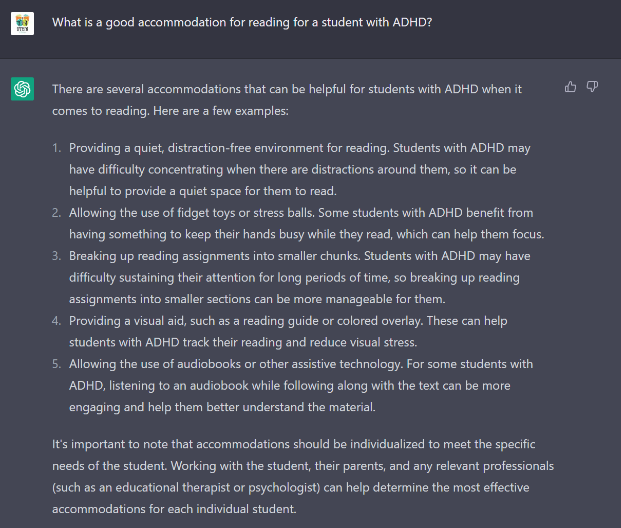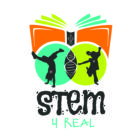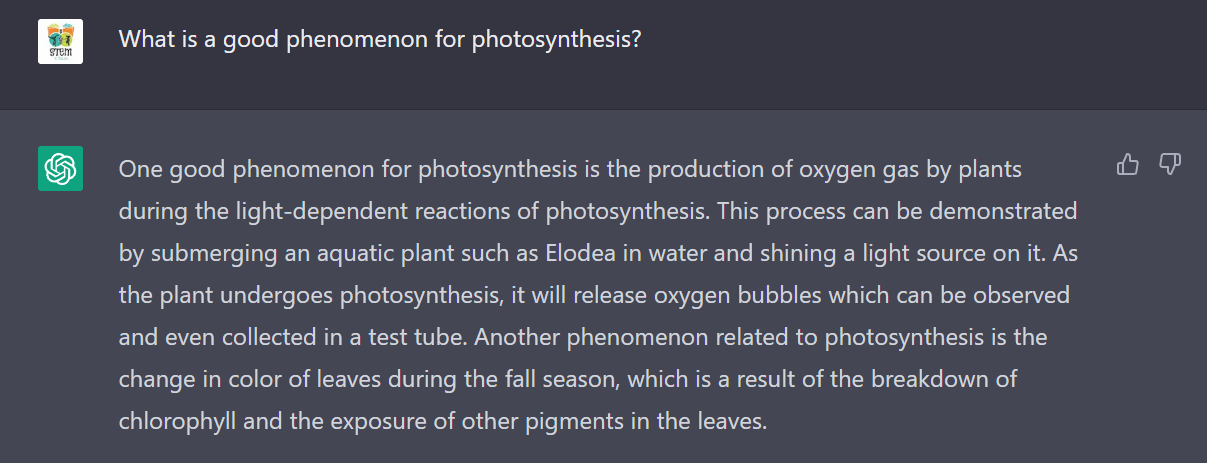How can we use ChatGPT to look through an equity lens? We are almost at the day and age where robots and artificial intelligence are taking over humanity. While that day looms over us, how can we stay ahead of the game and ensure that we are using these technologies to our advantage?
I’m sure you have heard of ChatGPT (extra points if you know what GPT stands for! Just ask ChatGPT!)
As if education needed another acronym, let’s explore this technology together. If we use STEM4Real’s DO-KNOW-THINK framework, we essentially want to create a lesson that emphasizes student engagement with the science and engineering practices (or the standards for mathematical practice). Then, we focus on the disciplinary core ideas to learn and the associated content knowledge. Finally, we think about the crosscutting concepts and how students think about their learning. Now we can use ChatGPT to create assessment questions, discussion prompts, and writing structures for Claim-Evidence-Reasoning.
Using ChatGPT through an educational equity lens means being mindful of the needs of all learners and working to ensure that all students have access to the information and resources they need to succeed. Here are a few ways that ChatGPT can be used to promote educational equity:
-
- Providing access to information: ChatGPT can be used to provide access to information for students who may not have access to traditional sources of information. For example, students who do not have access to textbooks or who speak a language other than the language of instruction may benefit from using ChatGPT to access information. Google translate now has a competitor!
- Personalizing learning: ChatGPT can be used to personalize learning for students with diverse needs. For example, students with disabilities or English language learners may benefit from using ChatGPT to access information or to receive additional support with their learning. We can create personalized accommodations and modifications, especially for IEPs.
- Promoting inclusivity: ChatGPT can be used to promote inclusivity by providing access to information in multiple languages or by providing information in a way that is accessible to students with specific disabilities.
- Supporting collaboration: ChatGPT can be used to support collaboration among students from diverse backgrounds. For example, students who speak different languages may be able to work together on a project or assignment using ChatGPT to communicate.
- Encouraging self-directed learning: ChatGPT can be used to encourage self-directed learning, which can be particularly beneficial for students who may not have access to traditional sources of support. Students can use ChatGPT to ask questions and to access resources that can help them succeed.
In all cases, it’s important to be mindful of the needs of all learners and to work to ensure that everyone has access to the resources and support they need to succeed.
I’m not going to lie to you. I just used ChatGPT to create that list. It felt so wrong, yet so right. We now have a tool that we can use to our advantage. I also went through and added my own little tidbits here and there. With that said, limiting and prohibiting use of this tool can only exacerbate the technology inequities that already exist with students from lower socioeconomic backgrounds. As educators, we cannot limit access and the opportunity to interact with new technology. It is up to us to embrace it.
Here are some examples of how I have used ChatGPT:
Creating accommodations and modifications for students with disabilities and IEPs:

Finding a good phenomenon:
In order to make it a culturally responsive phenomenon, I would ask for photos of the change in the color of leaves that are local to the students’ context and community. I would also connect it to the lack of trees in some areas versus another area. Did you know trees can be political? Check out this organization and their charge to get 100K Trees for Humanity! https://www.100ktrees4humanity.com/
Translation Services:
You can also translate informational text, classroom resources, and other learning materials.
Here are some additional resources that have personally helped our journey in learning about ChatGPT:
-
- ChatGPT For Science Teachers: https://youtu.be/86YJ49bxnJw
-
- Don’t Ban ChatGPT in Schools. Teach With It. https://www.nytimes.com/2023/01/12/technology/chatgpt-schools-teachers.html
-
- How Disruptive Will ChatGPT Be? https://catlintucker.com/2022/12/chatgpt-disruptive-tech/
Will ChatGPT replace the need for writing skills? Absolutely not. I do think that we will be able to do more and expand more. We also need the critical thinking skills necessary to vet the writing and ensure that we are communicating effectively. By using ChatGPT through an educational equity lens, educators can work to ensure that all students have access to the information and resources they need to succeed, regardless of their background or circumstances. As technology continues to evolve, it’s important to continue exploring innovative ways to use tools like ChatGPT to promote educational equity and ensure that all students have the opportunity to thrive.

